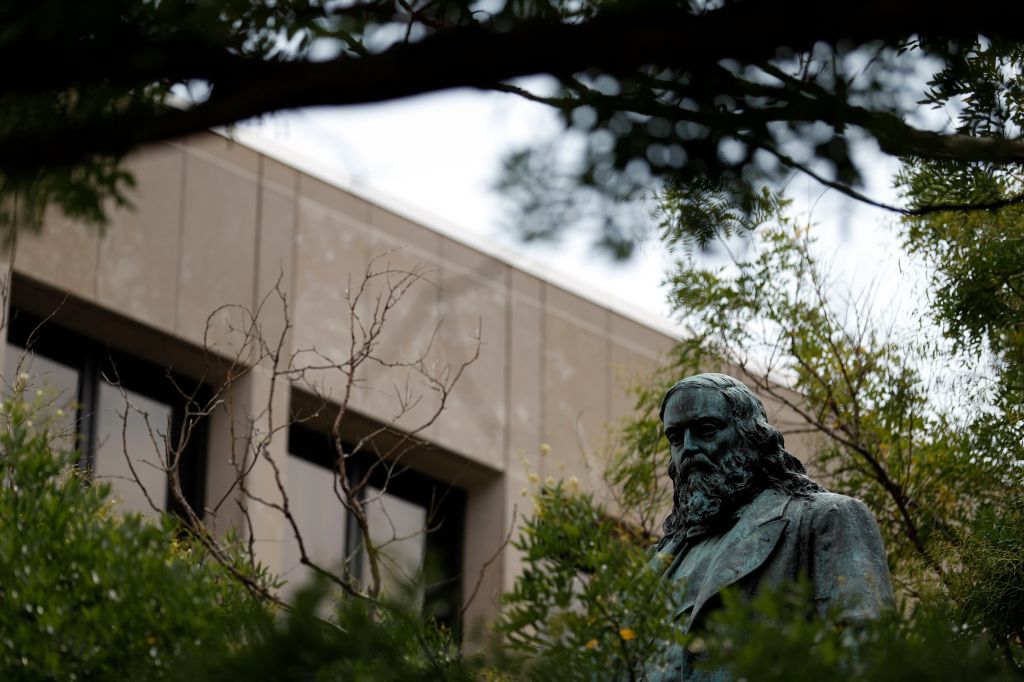[ad_1]
As major urban centers across America undertake the process of rethinking—and, in some cases, removing—monuments to potentially problematic figures, two bills have been proposed that would focus on controversial statues in Washington, D.C., while also calling for the construction of new public artworks honoring women and minorities.
Last week, city councilmembers in the nation’s capital met to discuss the proposed legislation, which would jumpstart a monuments-building process aimed at diversifying the District’s public art with an eye toward local talent. The first proposal would mandate the construct of at least eight new statues (one per ward) of women and people of color who grew up in Washington, D.C., or who otherwise made significant contributions to the region and country. The second would create a committee to review the city’s streets, schools, and statuary for controversial names that are at odds with calls to rectify histories of racism and sexism.
“This legislation aims to properly recognize and honor remarkable persons who left indelible marks on society: men, women, and migrants,” said Kenyan McDuffie, the councilmember behind the proposals, at last Thursday’s public hearing. “These bills aim to channel an important dialogue carrying around our country to reconcile symbols and monuments that have often complicated, and in some cases blatantly racist, history behind them.”
In 2017, the D.C. Council failed to vote on a similar measure proposed by McDuffie just a few months before the white supremacist march on Charlottesville ignited a nationwide push for the removal of Confederate monuments. Instead, the city allocated $300,000 to create a statue for the black civil rights lawyer Charles Hamilton Houston. And last February, city mayor Muriel Bowser established a commission to find a location for the statue and select an artist, neither of which has been announced yet.
Washington now finds itself following in the footsteps of cities like New York and San Francisco, where officials have already forged ahead with ambitious—if sometimes controversial—plans for addressing the diversity gap in public art.
The financial and political hurdles facing the D.C. Council are also significant. Washington officials expect to spend around $250,000 per year on their monuments—a sum that may not be enough to erect even a single sculpture. (By contrast, New York City has set aside $10 million for its She Built NYC initiative, which has, on average, spent $1 million per new statue.) District officials would also need to choose decision-makers for their project. The bill currently tasks the city’s Commemorative Works Committee with spearheading the monuments process, but Council chair Phil Mendelson suggested that an outside group could handle the public engagement process. During the public hearing, the lawmaker said he doubted that the committee, which is staffed by the mayor’s agency directors, had the expertise necessary to select appropriate honorees.
In 2019, Bowser repeatedly clashed with the Council in her attempts to gain control of the city’s arts infrastructure. Last September, the mayor seized control of the D.C. Commission on the Arts and Humanities in an attempt to convert artist grants into small business loans; her office also locked staff out of the city’s public art vault—a move deemed illegal by the District’s Attorney General.
There are more than 160 statues lining Washington’s streets and public parks, but less than four percent of them honor historical women, including First Lady Eleanor Roosevelt and the black educator Mary McLeod Bethune. The jazz musician Duke Ellington and the Motown singer Marvin Gaye are two of the only native Washingtonians of color memorialized, even though the city’s population is almost 50 percent black. Meanwhile, local residents have waged a long campaign to remove the District’s statue of Albert Pike, the only Confederate general with a monument in the nation’s capital. (Some historians have said that Pike was instrumental in forming the Ku Klux Klan.)
McDuffie’s statues bill suggests four possible subjects for the new monuments: Charles Drew, a surgeon medical research who developed groundbreaking blood storage methods; Rose Greely, Washington’s first licensed female architect; Mary P. Burrill, a playwright and teacher; and the Shaed sisters, all five of whom taught in D.C. public schools. The bill calls for the monuments to begin installation by 2030.
Among the speakers who testified in favor of the statues bill was Rosa Gumataotao Rios, the former U.S. Treasurer of the Obama era who spearheaded the now-scuttled plan to put Harriet Tubman on the twenty-dollar bill. “During my eight-year effort to redesign the currency, I learned very quickly how little women are represented in the history of our country,” she said. “I’m hoping that women, who are 51 percent of the population, can be well-represented in this effort.”
Frank Smith, a former councilmember who now serves as director of the African American Civil War Memorial and Museum, also appeared at the public hearing to show his support of the McDuffie bills. “Commemorative works offer an opportunity to educate our own people about important achievements,” he explained, “but they also give us a chance to have a comprehensive look at monuments that might not be appropriate for the nation’s capital.”
Because the bureaucratic process around monument-making can take years, some D.C. neighborhoods have forged ahead with their own public art initiatives. Those include a half dozen murals, including featuring the late saxophonist and D.C. mailman Buck Hill and another for Supreme Court Justice Ruth Bader Ginsberg.
[ad_2]
Source link

